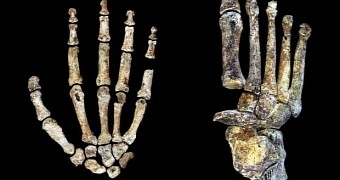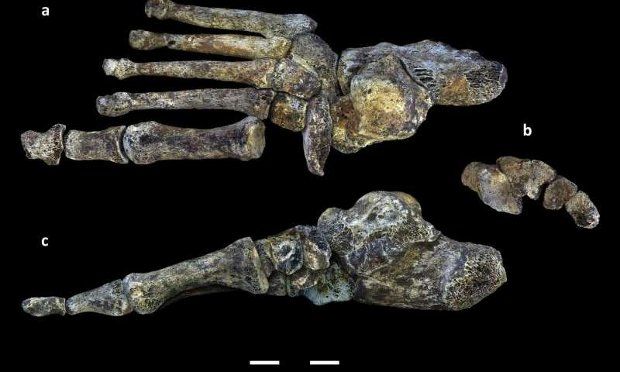In early September, researchers announced the discovery of a previously unknown human species in South Africa. The new species, named Homo naledi, was documented based on skeletal remains found in a cave in the Cradle of Humankind World Heritage Site near the city of Johannesburg.
Having examined these bones, about 1,550 of them, researchers realized that, although belonging to a species in the genus Homo, they didn't look like anything previously discovered. What they were looking at was an entirely new human species.
“We found adults and children in the cave who are members of genus Homo, but very different from modern human,” University of Colorado researcher Charles Musiba said in a statement at the time.
Specialists estimate Homo naledi stood roughly 1.5 meters (5 feet) tall, weighed some 45 kilograms (100 pounds), and had a brain about the size of an orange. At first glance, it looked like a hobbit.
New insights into the life of this newly found species
Since the species has only recently been discovered, researchers admit there are many things left to learn about it. All the same, judging by the bones they have so far recovered and analyzed, they have a pretty good idea of how Homo naledi would spend its days.
Writing in the journal Nature Communications, specialists explain that the anatomy of its hands and feet indicates that it was perfectly equipped both to climb trees and walk upright. What's more, there is evidence that it was also quite gifted at manipulating objects.
“Homo naledi may have been uniquely adapted for both tree climbing and walking as dominant forms of movement, while also being capable of precise manual manipulation,” researchers say, as cited by Phys Org.
Thus, the skeletal remains that led to the discovery of this new human species indicate that Homo naledi had wrists and thumbs allowing it to grasp and manipulate objects. Its finger bones, however, were curved, a sign that it would often climb trees.
Its feet were perfectly designed to allow it to stand upright, even though its toes were too somewhat curved. This anatomical quirk, however, didn't in any way impede an upright position.
This human species is an oddity through and through
Scientists say Homo naledi's wrists and thumbs are a feature it shares with Neanderthals and modern humans. Then, the curved fingers bring it closer to hominin species such as Australopithecus afarensis, which lived between 3.9 million and 2.9 million years ago.
As for its feet, their anatomy is strikingly similar to that of modern humans. Well, except for the odd-looking curved toes, that is.

 14 DAY TRIAL //
14 DAY TRIAL // 

